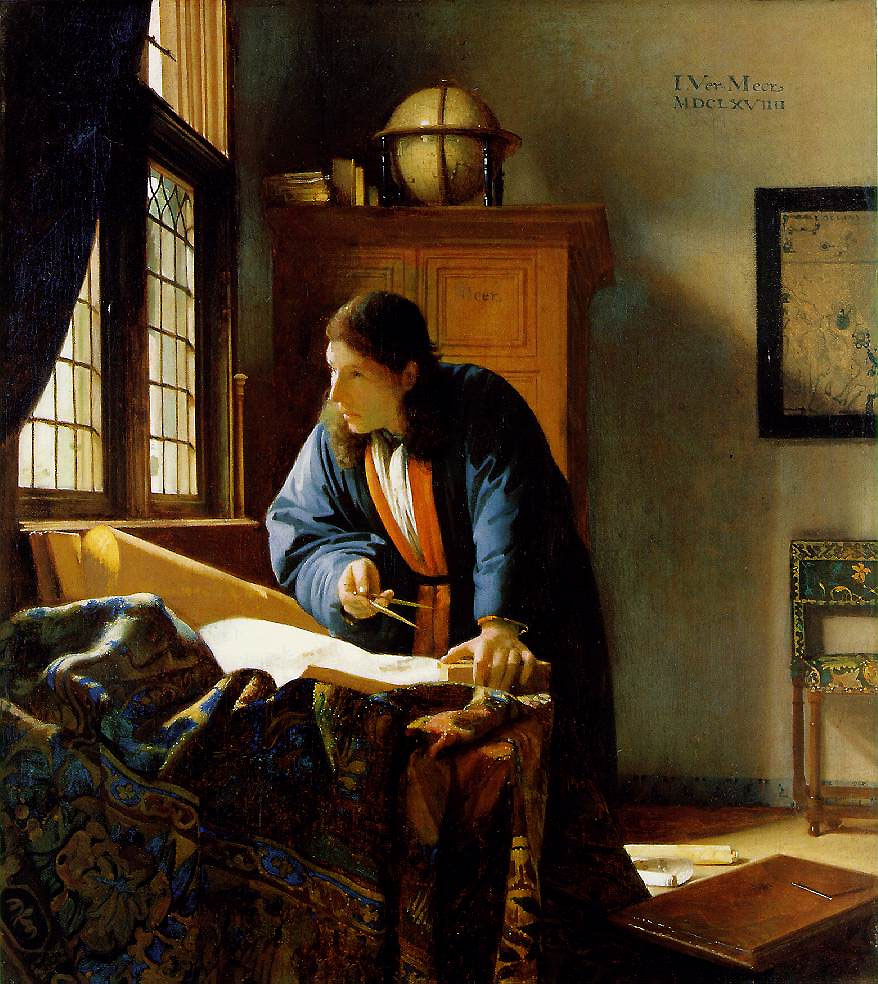Eye of the Beholder: Johannes Vermeer, Antoni van Leeuwenhoek, and the Reinvention of Seeing
Laura J. Snyder
Art, optics
Johannes Vermeer was a master of Dutch genre painting. Antoni van Leeuwenhoek was a pioneering microscopist, the first to observe single-celled organisms. I'd known a fair amount about each of these men individually--though more about Leeuwenhoek--before I picked up Eye of the Beholder.
I had not registered that they lived in the same city (Delft) at the same time (they were baptized a week apart) in houses that were a minute's walk from each other, and had a number of mutual friends. Given the relatively small size of the city, and the two men's similar social standing, it's hard to imagine that they weren't at least acquaintances. It turns out that Leeuwenhoek was even appointed to execute Vermeer's will.
That's the first of many connections that Laura Snyder talks about, but it's hardly the most interesting part of this extraordinary and thought-provoking book. Snyder's thesis is that both men were working at the edge of a new way of seeing, using both the emerging science of optics and the new thinking of the early Enlightenment.
Take Vermeer first. He was far from the only painter of Dutch interiors, but he was perhaps the sharpest observer. He and his fellows differed from the Italian school of painting in that the Italian Old Masters tended to produce what I might call interpreted paintings--art that was meant to tell or illustrate a story (often religious or mythological), or to produce a moral lesson, or serve as an allegory. To fully understand these paintings, you sort of have to follow the artist's thoughts.
By contrast, consider Vermeer's The Geographer--the model for which, quite a few scholars think, may have been Leeuwenhoek himself:
Who is this man? Has he just been struck by a thought? He's deeply engaged in something, but in what? Vermeer doesn't tell us. He just gives us the moment, accompanied by a near-photographic level of detail. The painting isn't interpreted, but observed.*
The distinction becomes critical when we think about the then-brand-new science of microbiology. Even today, science struggles against narrative. We humans have an instinct to see, not what's there, but what we expect. In the Middle Ages and Renaissance, that was considered a feature rather than a bug. In the Scholastic tradition, to generalize wildly, phenomena were observed in order to confirm what the observer already knew (meaning, in this case, the medieval understanding of Aristotle). Galileo saw mountains on the moon; other viewers saw them as clouds, or reflections; still others--so Galileo complained--refused to look through his telescope at all.
Leeuwenhoek is called the Father of Microbiology not only because he built good microscopes, and not only because he was exceptionally skilled and diligent in using them, but because he too observed. He saw what was there, and he didn't see what wasn't there.
The above is only the briefest, barest synopsis of the ideas in this dense yet fascinating book. Some of them are speculative: Snyder subscribes to the somewhat-controversial idea that Vermeer made use of lenses, mirrors, and the camera obscura. Others are perhaps more strongly presented than the evidence warrants. These, however, are nits to pick. Overall, Eye of the Beholder is that rare and excellent book that does the thing it describes: it takes something familiar, and gives us a whole new way to look at it.
*And part of that observation prefigures the Impressionists. Examine the shadows in The Geographer above, and you'll see a whole range of tones. That's Vermeer working with how the eye perceives shade and light, which is not at all the way a camera does.↩

No comments:
Post a Comment